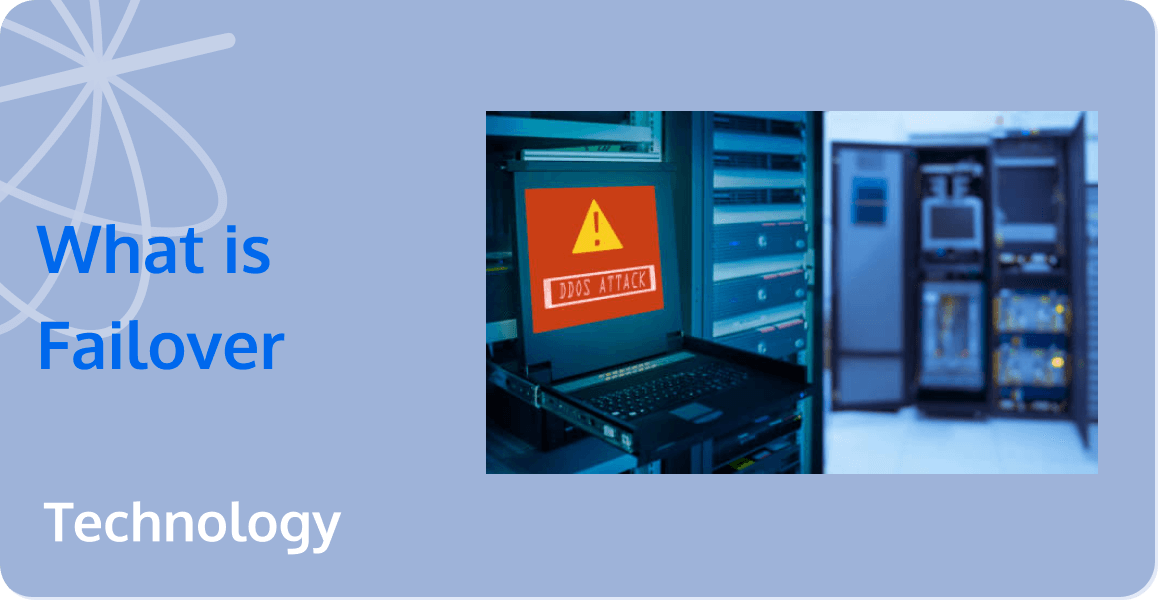Mastering Failover: A Complete Guide to High Availability Systems

In today's highly digital age, whether it is a large e-commerce platform, a financial trading system, or a cloud service infrastructure, the stability and availability of the system are of crucial importance. Once problems such as hardware failures, network fluctuations, and software vulnerabilities occur, if there is no proper response mechanism, it is very likely to cause service interruptions and bring huge losses to enterprises. Failover is precisely one of the key technical means to ensure the continuous operation of the system.
What is Failover?
Failover is a critical backup operational mode in which a system automatically switches to a standby database, server, hardware component or network upon the failure or abnormal termination of the previously active system. It's an important feature in high-availability systems that helps ensure continuous operation and minimal downtime when problems occur.
In practical terms, failover can be either automatic or manual. For example, in database systems like Aurora or SQL Server Availability Groups (AG), when the primary system fails, the failover mechanism activates a secondary system to take over operations. This process involves switching all operations and connections from the failed primary component to the backup system, ensuring that business operations can continue with minimal interruption. The failover process typically includes health monitoring, failure detection, and automated switching of system resources.
When Does Failover Occur?
Failover is not activated at any time. It is usually triggered when the system detects abnormal conditions in key components or services. These abnormalities cover multiple levels:
1. Hardware Failures
Common triggers include sudden hard drive failures, memory module errors, and CPU overheating crashes in servers. For example, if a large number of bad sectors appear on the hard drive of a physical server in a data center, resulting in the inability to read and write the stored data normally, failover must be quickly initiated to prevent the business relying on this server from coming to a standstill.
2. Network Failures
Network connection interruptions, high packet loss rates, and DNS resolution errors can also trigger the failover mechanism. For instance, if the network optical cable in a certain region is cut, causing users in that area to be unable to access the server, the system needs to redirect the traffic to a backup link or node to maintain the normal use of users in other regions.
3. Software Failures
Software-level failures such as application crashes, database deadlocks, and operating system kernel errors cannot be ignored either. Taking the period of a large e-commerce promotion as an example, a surge in order volume may cause the trading system of the e-commerce platform to experience memory overflows and process freezes. At this time, failover is required to allow the backup system to take over the business.
4. Performance Bottlenecks
When the system load is too high and the response time is significantly prolonged, reaching the preset performance threshold, failover may also be initiated. For example, when a large number of players flood into a game server at the moment of server opening, the CPU and memory usage of the server soar and the server becomes severely laggy. Failover can distribute the traffic of some players to a less loaded backup server.
What are the Roles of Failover?
The core role of failover is to ensure the high availability and business continuity of the system, which is specifically manifested in the following aspects:
1. Reducing Service Interruption Time
When the primary system fails, the business is quickly switched to the backup system, allowing users to hardly notice the service interruption. Taking a financial trading system as an example, every second counts in stock trading. Even a few seconds of interruption may cause investors to miss opportunities and suffer losses. Failover can minimize the interruption time.
2. Protecting Data Integrity
Not only must the business continue, but also the data must be ensured not to be lost or corrupted. During the failover process, with the help of data synchronization technology, the data of the primary system is backed up to the backup system in real time or at regular intervals. Even if the primary system completely crashes, the backup system has complete and consistent data and can seamlessly take over the business.
3. Improving User Experience and Trust
For ordinary users, a stable and smooth service experience is the key factor for them to choose a product or service. Failover can avoid frequent occurrences of web page inaccessibility and unresponsive operations, making users trust the platform and helping enterprises establish a good brand image and reputation.
4. Reducing Economic Losses
System downtime is often accompanied by high economic costs, including direct trading losses, customer compensation, and indirect brand damage and market share loss. The failover mechanism effectively reduces these potential losses and makes enterprise operations more stable.
How Failover Works?
The working process of failover mainly includes the following key steps:
1. Fault Monitoring
A series of professional monitoring tools are used. For example, hardware sensors monitor the hardware status of the server; network monitoring software tracks network connections, bandwidth, and packet loss in real time; and application performance management (APM) tools monitor the running status and performance indicators of the software. Once the monitored data exceeds the normal range, an early warning signal is immediately issued.
2. Fault Determination
After receiving the warning, the system accurately judges the fault type, severity, and impact range according to the preset judgment rules and thresholds. For example, if the CPU usage of the server exceeds 95% continuously for 5 minutes and the response time exceeds 3 seconds, it is determined as a serious performance fault.
3. Switching Decision
Based on the fault determination result, a switching decision is made to determine which backup resources to enable. If the hard drive of the primary server fails, a backup server with the latest data synchronization is selected; in case of a network fault, the system switches to a backup network link.
4. Resource Switching
This is the most critical practical operation step. The business traffic, data access, etc. are quickly and smoothly transferred from the primary resource to the backup resource. Common switching methods include IP floating, which allows the backup server to instantly take over the IP address of the primary server and receive network requests; and master-slave switching at the database level, which directs read and write operations to the backup database.
5. Subsequent Recovery and Verification
After the fault is repaired, the business is smoothly switched back to the primary resource, or the backup resource is upgraded to become the new primary resource. At the same time, the repair effect of the primary resource is verified to ensure its stable and reliable operation when put into use again.
What is a Failover Cluster?
A failover cluster is a special architecture composed of multiple servers, aiming to jointly bear the business load and automatically transfer the business when a member fails. The servers in these clusters are divided into primary servers and backup servers:
- Primary Server: Under normal circumstances, it undertakes the main business processing work, such as receiving user requests, performing key calculations, and storing core data.
- Backup Server: It is usually in a standby state and synchronizes data and configuration information with the primary server in real time to ensure that it can take over the work of the primary server at any time. For example, in a Windows Server failover cluster, multiple physical servers are connected through a shared storage device. The primary server is responsible for daily business. Once a failure occurs, the cluster service activates the backup server quickly based on the heartbeat detection mechanism and seamlessly continues the business.
The failover cluster has significant advantages and can provide high availability, scalability, and load balancing capabilities. As the business grows, servers can be conveniently added to the cluster to share the load. Different servers can also be responsible for different business modules to optimize the overall performance.
What is Fast Failover?
Fast failover emphasizes completing the failover operation within an extremely short time, usually measured in milliseconds or even microseconds. Compared with conventional failover, it has extremely high requirements for response speed:
1. Real-time Data Synchronization
To achieve fast switching, the primary and backup systems need to maintain almost real-time data synchronization, using high-speed network connections and efficient synchronization algorithms to ensure data consistency. For example, a financial database adopts a (same-city active-active) architecture. With the help of fiber-optic direct connection, the data synchronization delay between the two databases is controlled within a few milliseconds.
2. Optimized Switching Process
The fault monitoring, determination, and switching processes are streamlined to remove unnecessary intermediate links and delay factors. Through intelligent algorithms, possible faults are predicted in advance, and backup resources are pre-loaded. Once a fault is triggered, the switch is immediately carried out.
3. Hardware and Software Collaboration
High-performance hardware devices such as low-latency network switches and high-speed storage devices are required, combined with specially designed software systems. For example, a hyper-converged infrastructure integrates computing, storage, and network resources and has a built-in fast failover mechanism, which greatly shortens the switching time.
Fast failover is often used in scenarios with extremely high requirements for real-time performance, such as aerospace flight control systems, 5G core networks, and high-frequency financial trading. Even a slight delay may lead to disastrous consequences.
EdgeOne: Ensuring High Availability with Robust Failover Solutions
EdgeOne is a powerful edge computing platform designed to improve application performance and reliability by bringing computing resources closer to end-users. Its key features include low-latency content delivery, enhancing website security, and seamless integration with various cloud services. EdgeOne allows businesses to deploy applications at the edge of the network, ensuring faster response times and a better user experience.
In terms of failover measures, EdgeOne adopts a multi-layered approach to guarantee high availability and resilience. It employs automatic failover mechanisms that detect service disruptions and redirect traffic to backup nodes without any noticeable downtime. Additionally, EdgeOne supports data replication across multiple edge locations, ensuring that critical information remains accessible even in the event of a failure. This redundancy minimizes the risk of data loss and enhances overall system reliability. With these failover capabilities, EdgeOne gives businesses the assurance that their applications will stay operational, even during unexpected outages.
Sign up for EdgeOne today to start your free trial and experience unparalleled performance and reliability with our robust failover solutions!
Conclusion
Failover technology, as the unsung hero behind the stable operation of the system, covers a complex set of processes from monitoring, switching to recovery. The failover cluster provides a solid architectural foundation, and fast failover meets the extreme real-time requirements. With the continuous development of technology, failover will continue to evolve towards intelligence, automation, and ultra-low latency in the future, building a stable foundation for the digital world.
FAQs
Q1: What is failover?
A1: Failover is an automatic switching process to a redundant or standby system when the primary system fails or becomes unavailable.
Q2: What are the main types of failover?
A2: The main types include active-passive failover where one system is on standby, and active-active failover where multiple systems operate simultaneously.
Q3: What are the key benefits of implementing failover?
A3: Failover ensures high availability and business continuity by minimizing system downtime and automatically redirecting operations to backup systems.
Q4: How does database failover work?
A4: Database failover automatically switches to a backup database server when the primary server fails, ensuring continuous data access and service availability.
Q5: What is the difference between failover and load balancing?
A5: While failover focuses on system redundancy and recovery during failures, load balancing distributes workloads across multiple servers to optimize resource usage.

